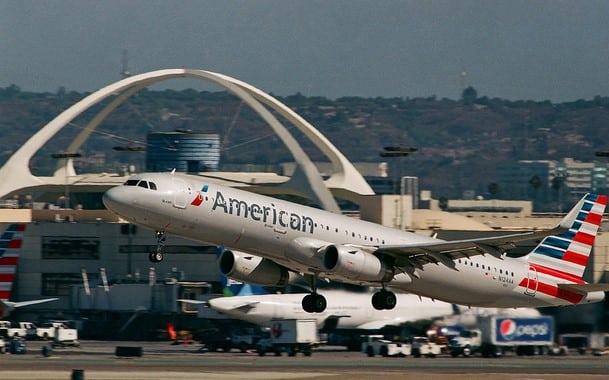
An Airbus A321 in service to American Airlines. Photo courtesy of Glenn Beltz, CC BY 2.0
ADS-B In upgrades coming to the American Airlines Airbus A321 fleet will enable the pursuit of FAA NextGen goals. Avionics recently caught up with experts from Aviation Communication & Surveillance Systems to discuss ADS-B In procedures and how the upgrades will enable the use of interval management in locations such as Phoenix International Airport.
In May, Thales’ and L3’s joint venture ACSS said it would be equipping the American Airlines A321 fleet with a suite of SafeRoute ADS-B In software applications as well as supporting traffic collision avoidance system (TCAS) processors and displays. The upgrades, which are already featured on American’s A330 fleet, will include cockpit display of traffic information (CDTI) technology for enhanced situational awareness, CDTI assisted visual separation (CAVS) and an initial version of interval management (IM), which is an ADS-B In application that gives pilots more control over the spacing of their aircraft relative to other ADS-B equipped aircraft arriving at busy airports.
Boeing, Honeywell and NASA made headlines in April 2017 after performing flight deck-based IM trials involving Honeywell’s Boeing 757, Dassault Falcon 900 and United Airlines Boeing 737 aircraft. The trial proved that the addition of algorithms using NASA’s trajectory-based airborne spacing for terminal arrival routes (ASTAR) solution can enable a chain of airplanes approaching an airport to use a new set of air traffic control (ATC) voice clearances directing flight crews to achieve and maintain a given time-based or distance-based longitudinal spacing behind a target airplane. It enables new operations in either a voice or datalink environment with new types of advanced ATC arrival procedures that reduce fuel burn and airport noise.
American Airlines’ goal for IM on its A321s will be to achieve and maintain desired spacing intervals by using low-level vectoring, according to ACSS.
“American is going to fly an initial IM operation on some of the arrivals into Phoenix on a daily basis during commercial flights,” said ACSS senior staff engineer Chuck Manberg. “And we’ll be retrieving a lot of data from those flights so that we can go on and quantify those benefits of what IM can provide to the operators and the NAS moving forward.”
By upgrading with the new SafeRoute architecture, the A321s will also be able to use CDTI and CAVS. According to ACSS president Terry Flaishans, the upgrades will use existing certified hardware on the A321 fleet to do a lot of the control manipulation within the displays in the primary field of view.
It will also add a small display to the center forward field of view where the actual ADS-B In traffic will be displayed for pilots. In combination with the existing flight management system, primary displays and MCDU, pilots will be able to perform all of the previously mentioned ADS-B In functionality.
“On the IM operation, you have to follow an ADS-B-equipped aircraft to the runway,” Flaishans said. “Previously, the majority of aircraft were not equipped, so the installations we provided this on before could not perform CAVS. Now that ADS-B Out is starting to be predominant and a majority of the airlines are starting to equip, you can perform this function right now once you get this equipment installed.”
The upgrades for American’s A321 fleet are planned for the beginning of 2019. American’s first IM approaches are scheduled to start two years after the first aircraft is equipped with the new ADS-B In upgrades, according to ACSS.